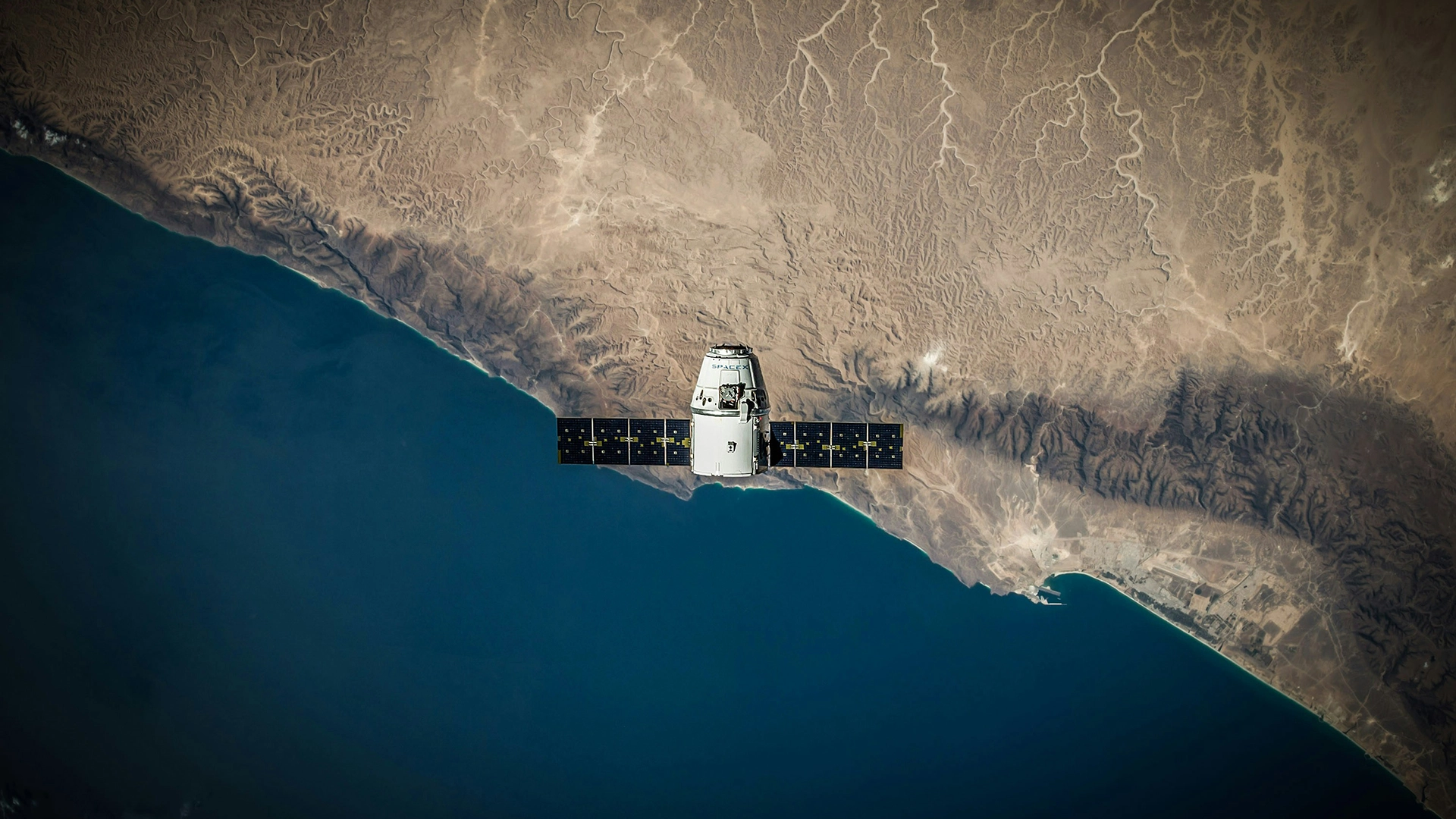
Image by SpaceX, from Unsplash
Solar Storms Are Speeding Up Starlink Satellite Failures
NASA has discovered that solar activity is making Starlink satellites fall to Earth faster, raising concerns about debris and satellite longevity.
In a rush? Here are the quick facts:
- Solar activity is shortening Starlink satellites’ orbital lifespans.
- Geomagnetic storms increase atmospheric drag on low-Earth satellites.
- NASA tracked 523 Starlink satellite re-entries from 2020–2024.
NASA researchers have discovered that SpaceX Starlink satellites experience accelerated descent toward Earth because of the recent increased solar activity, as first reported by New Scientist (NS).
The solar activity cycle, which lasts 11 years, reached its peak in late 2024. During the solar maximum period, bursts of solar energy heat the atmosphere, causing it to expand. NS explains that this expansion increases atmospheric drag, primarily affecting satellites in low-Earth orbit, such as the 7,000+ Starlink satellites that provide internet connectivity.
“When we have geomagnetic storms, satellites re-enter faster than expected,” said Denny Oliveira from NASA’s Goddard Space Flight Center, as reported by NS. NASA found that satellite lifespans could be cut short by as much as 10 days during intense solar activity.
Between 2020 and 2024, 523 Starlink satellites re-entered Earth’s atmosphere and burned up. But Oliveira warns, “In a few years, we will have satellites re-entering every day,” as reported by NS.
While some re-entries are planned, others happen due to unexpected failure or solar interference. Satellites orbiting below 300 km descend more quickly during intense geomagnetic storms, shortening their re-entry period to five days instead of the usual 15.
Samantha Lawler, an astronomer at Canada’s University of Regina, says this is the first time we’ve seen the effects of solar maximum on such a massive satellite constellation. “It is important to do these measurements.,” she added, as noted by NS.
The process, according to Sean Elvidge from the University of Birmingham, helps remove dead satellites from orbit. However, it also introduces potential hazards. Rapid satellite descents reduce the time available for them to fully burn up, increasing the risk of debris reaching Earth’s surface.
NS notes that in August 2024, a 2.5-kilogram piece of Starlink satellite debris was found on a farm in Saskatchewan. Lawler questioned how many other fragments might have gone undetected, saying, “If we found one (piece), how many did we miss?”


 Previous Story
Previous Story

 Latest articles
Latest articles 